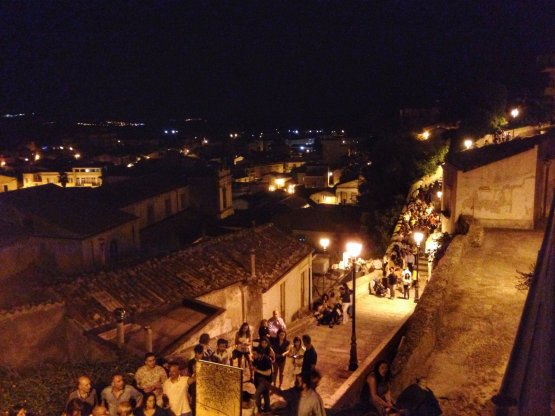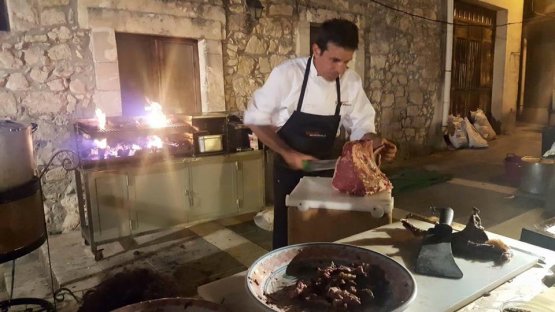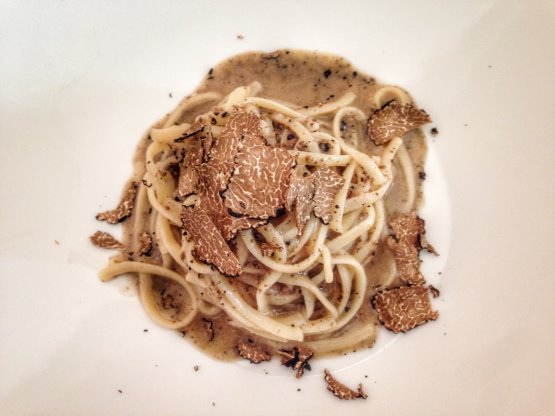Palazzolo Acreide is a lovely village in the province of Syracuse, on the slopes of the Hyblaean Mountains, not too far from Val di Noto. Two periods characterise it in particular in terms of history, art and architecture: the first, around 600 B.C. Seventy years after Syracuse was founded, Greeks arrived in Sicily and settled here. They founded a village called Akrai on top a hill where even now there’s a beautiful theatre dating from those days, still used for many shows.
The second crucial period for the development of Palazzolo Acreide is late Baroque: just like with other towns in the Val di Noto, Palazzolo also experienced a time of splendour after the terrible 1692 earthquake, when it was rebuilt with lots of effort by the local nobility. This resulted in magnificent houses, beautiful churches such as Saint Sebastian or Saint Paul, and many other spots full of history, thanks to which the town was listed in the Unesco World Heritage List in 2002.

A view of Quartiere dell'Orologio in Palazzolo Acreide. The first edition of Vicoli&Sapori took place here
The history of Palazzolo Acreide also includes a great culinary tradition, which continues to our days. This was the focus of a festival launched in the summer of 2016 with the first edition of
Vicoli&Sapori, promoted by the municipality of Palazzolo but most of all born thanks to the creative, effective and enthusiastic collaboration of nine restaurants, two cheese factories, two pastry shops, a pasta producer and a baker. All local, of course.
For two nights, on the 30th and 31st of July, these food protagonists offered different interpretations of the local excellences in large stands. Above all, veal. The area is indeed historically dedicated to the breeding of high quality cattle and even these days zootechnics are extremely important in the food industry (there are around two hundred breeders in the area). The ambition of presenting an excellent product while resisting the temptation of investing in intensive farming is also remarkable.

At its stand, La Corte di Eolo offered the excellent local meat both grilled or boiled (following a local traditional recipe)
But very recently
Slow Food acknowledged another excellence from Palazzolo, namely the
Salsiccia di Palazzolo, made from the meat of the precious Sicilian pig which found its perfect habitat on the Hyblaean Mountains, just like it happened on the Nebrodi and in some parts of the Madonie. This sausage will be a new Slow Food "Presidium", so that its characteristics and commercial development are safeguarded.
Sitting in one of the most interesting restaurants in town,
Andrea - Sapori Montani, we tasted the third local delicacy, that is to say the black truffle that grows in the forests of the Hyblaean Mountains. Chef
Andrea Ali, one of the main creative engines within
Vicoli&Sapori, is particularly fond of this ingredient. He enhances it with some excellent handmade tagliolini.
Ali’s cuisine offers lots of inspiration, in the simplicity of his
Maccheroncini with pumpkin tenerumi, tomato and toasted bread, in his
Veal in pistachio crust, and in his
Goat cheese flan with pear and gin sauce.

Andrea Ali’s tagliolini with black truffle found in some woods on the Hyblaean Mountains
It’s when we speak with chef
Ali that we find out more about the great quality of local cheese, especially ricotta, made from raw, unpasteurised cow’s milk. Among the producers of this territory we were also struck by
Sebastiano Caligiore’s cheese factory,
Tenuta Tagameli. He decided to focus on the use of the so-called “noble milk”, that is to say made from cows whose daily diet comprises at least 70% hay and fresh herbs.
In this case the fresh herbs are those from the countryside and the woods around Palazzolo Acreide, whose vegetal biodiversity is one of the widest in the world, and the result is an aromatic milk, which gives life to cheese that is as noble.
Good first take, they say. It is a very fitting saying for the debut of this event which will allow many people to learn about some excellent Sicilian products, about a small Baroque jewel perched on the Hyblaean Mountains, and about a very interesting culinary offer for a village with less than ten thousand inhabitants.